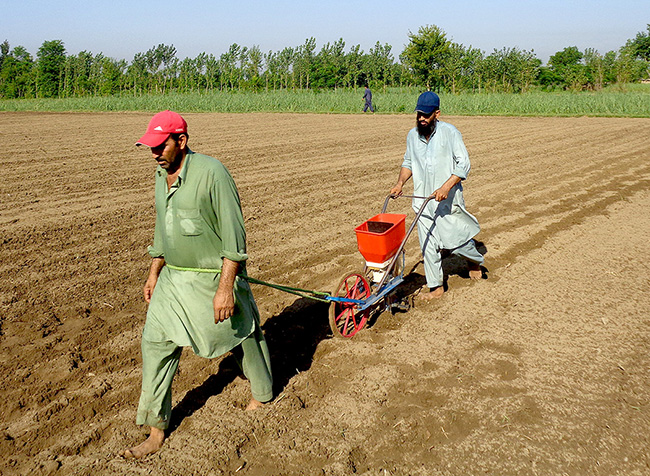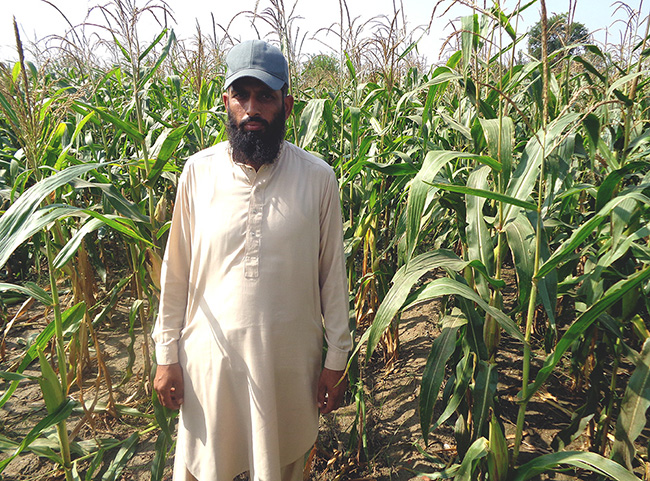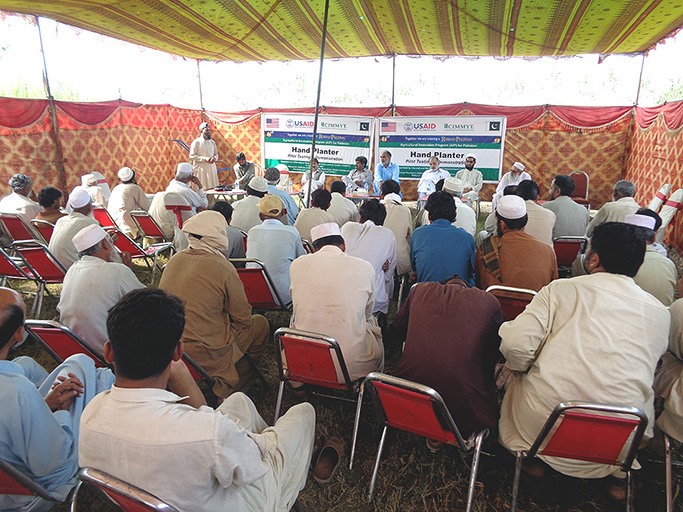
In Pakistan, maize is planted on 0.97 million hectares, of which 0.42 million are located in the province of Khyber Pakhtunkhwa (KP). The maize crop in KP is sown predominantly by hand and farmers practice a variety of methods such as broadcast and line sowing. Small farmers broadcast the maize seed and then do a shallow cultivation; however, seed is wasted with this method.
Maize is also line-planted, which involves placing rope or string lengthwise with marks at specific distances. The maize seed is then planted with a hoe in what is known as the Thapa method, which is very labor intensive.

In another method, furrows are made with the help of a plow. Farmers place the seed at approximate distances and cover seed with wood planking. This method has to be implemented by experienced persons.
CIMMYT, under the Agricultural Innovation Program (AIP) for Pakistan, focuses on improving the productivity of small farmers in Pakistan and introduced the push row planter for small maize farmers in KP province. Push row planters were brought into the country with the help of the CIMMYT-Nepal office. The planters have a vertical seed metering system that helps to place the maize seed at a proper plant-to-plant distance. They can also apply fertilizer and seed in one operation in tilled fields. CIMMYT, in collaboration with the Cereal Crops Research Institute (KP), initiated pilot testing of the push row planter in Nowshera district, KP province.

Jalees Ahmed, a smallholder from Pirsabaq village in Nowshera, plants maize and wheat to provide his family’s livelihood. He used to hire 5-6 laborers to plant one acre of maize in one day. Jalees was one of several farmers who started using the push row planter after CIMMYT and CCRI staff trained him to use it. He planted maize on one acre of land in half a day with the help of one laborer, generating cost and time savings. In a single operation, he was able to plant maize and apply fertilizer.
Jalees Ahmad showed his maize crop to 100 of his fellow farmers during a field day (14 October 2015) and shared his views on the push row planter. He expressed his satisfaction because the planter produced a better crop stand and recommended it to his fellow farmers. He believes the planter is cost-effective, time-saving, and inexpensive, compared to traditional cultural practices.
 Capacity development
Capacity development 
